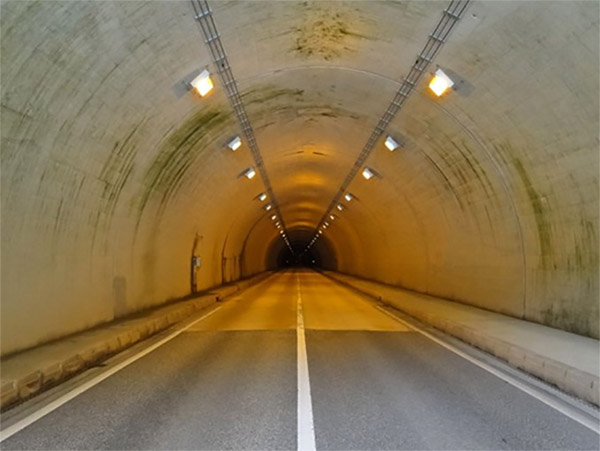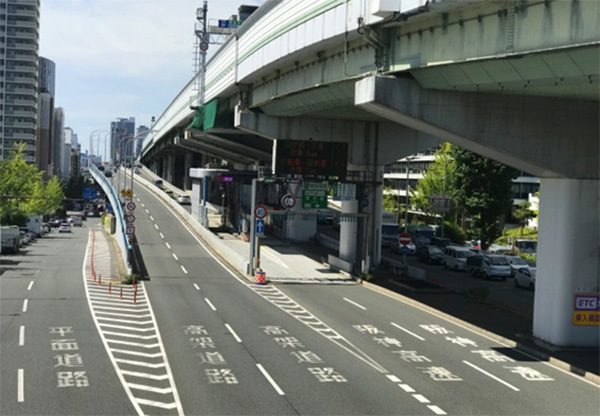News
Maintenance Technology for Aging Infrastructure Updated in July 2020
About 30 years ago, I heard a mournful complaint from an acquaintance who studied in Boston. She was tormented by the city’s tap water. She said that local Bostonians also described the water as emitting “an odor resembling a dead and rotten carcass of a dog.” Boston was one of the first American cities with thoroughly built infrastructure. The city probably detected deterioration of life infrastructure early on compared to other cities. Looking back, there was also much media coverage on aged highways and what to do about them.
After a few decades, Japan is now facing similar problems. As part of cross-ministerial Strategic Innovation Promotion (SIP), the Japanese government started a project named “Infrastructure Maintenance, Renewal and Management Technology” in 2014. SIP was launched within the Comprehensive Strategy on Science, Technology and Innovation (approved by the cabinet on June 7, 2013) and also as part of Japan Revitalization Strategy (approved by the cabinet on June 14, 2013). It is one of the most important innovation-related programs led by the Japanese government. Council for Science, Technology and Innovation (CSTI) is to lead the project to realize true innovation beyond ministerial and disciplinary boundaries.
Going onto its third year, what are accomplished through the “Infrastructure Maintenance, Renewal and Management Technology” project? In December 2016, four research institutes including RIKEN publicized a press release. By reading it, we can see that technology for efficient maintenance of infrastructures like tunnels and better safety measures are definitely shaping up.

Many Japanese people have noticed the significance of maintaining tunnels. The Chuo Expressway Sasago Tunnel accident(Otsuki-shi, Yamanashi Prefecture)of December 2012 was so shocking to the Japanese public. In this accident, the tunnel’s 130-meter concrete ceiling came crashing down on three cars driving through. 9 people had lost their lives.
To prevent accumulation of car exhaust in Sasago Tunnel, a ceiling board is installed separately from the inner wall, at the upper parts of the tunnel. This will create a space near the upper parts of the tunnel to enable efficient ventilation. Regarding the cause of the accident, Ministry of Land, Infrastructure and Transport’s accident investigation committee pointed out some flaws. The bolt to affix the ceiling board’s hanging bracket to the tunnel’s inner wall lacked strength. The adhesive glue which was supposed to affix the bolt to the inner wall had deteriorated, too.
The press release explains that the research institutes were able to make use of laser to check cracks in old tunnel walls. They also succeeded in a field test to safely counter cracks and defects.
The inspection method confirmed in the field test combines three technologies. Based on the exclusively developed unique laser technology, Group Director Katsumi Midorikawa of RIKEN’s Extreme Photonics Research Group established a method for measuring the condition of the tunnel’s inner surface with high spatial resolution, to detect cracks and irregularities. By scanning the concrete wall from a 5 meter distance with this laser, it is possible to spot concavities and convexities with an accuracy of 0.1 mm. It can also detect cracks as small as 0.15 mm wide.
The team consisting of Chief Researcher Yoshinori Shimada at Institute for Laser Technology (ILT), and Tetsuya Kawachi* at National Institutes for Quantum and Radiological Science and Technology (QST), irradiated a high intensity pulsed laser to the inner wall of the tunnel to vibrate the concrete. By analyzing the vibration using another laser, they were able to speed up measurement to reach 50 times per second. In addition, Japan Atomic Energy Agency (JAEA)’s Hiroyuki Daido/Specially Appointed Councilor was able to demonstrate the principle of "laser concrete cutting technology” to melt, cut and remove fragile parts of concrete. *Deputy Director, Department of Management & Planning
At present, how to look for abnormalities on tunnels inner walls still depends on manual labor. Technicians would install a work platform on site, and the technician checks the concrete surface by visual inspection and by knocking the wall with a hammer. The technician would listen closely to the sound and vibration to judge defects. When a defect is found, it is knocked down manually. The newly developed technology is expected to reduce such manual work which takes up time and labor. It will also eliminate safety concerns.

In addition to the aging infrastructure like expressways and bridges, Japan is faced with severe fiscal budget and decrease in skilled technicians. SIP’s research theme “Infrastructure Maintenance, Renewal and Management Technology” would help to solve these imminent problems and improve infrastructure maintenance and management, thereby creating an attractive maintenance market. It would also constitute a foundation for bringing these technologies overseas.
RIKEN and other research groups say that in future, they want to put this technology into practical use through repeated field experiments to verify various types of defects and how to process them. This technology may contribute to other Asian countries where infrastructure maintenance is can become an important issue. (T.K)
Koiwai Tadamichi
Public Relations Advisor
China Research and Sakura Science Center
Japan Science and Technology Agency







